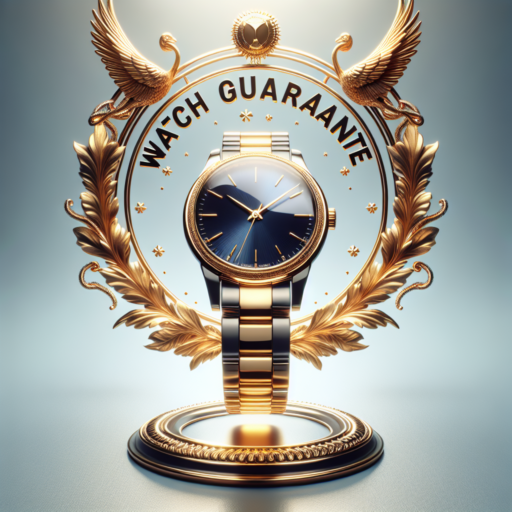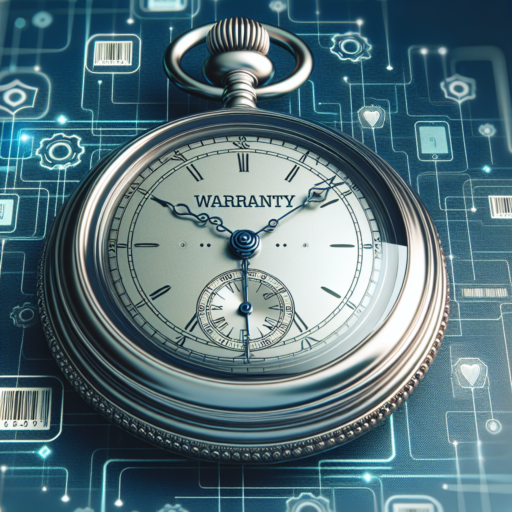Understanding Watch Guarantee: What You Need to Know
When delving into the world of timepieces, the guarantee attached to a watch is a critical aspect that often harbors numerous questions and concerns. A watch guarantee, fundamentally, is a pledge from the manufacturer or seller to the buyer, promising to repair or replace the watch if necessary, under certain pre-defined conditions. Understanding the nuances of these guarantees can significantly enhance your purchasing decision and ensure peace of mind post-purchase.
Types of Watch Guarantees
The landscape of watch guarantees varies widely across manufacturers and retailers. Generally, these guarantees can be categorized into two main types: the manufacturer’s guarantee and the retailer’s guarantee. The former is issued by the watch’s manufacturer and typically covers defects in the movement or craftsmanship of the watch. On the other hand, a retailer’s guarantee might extend beyond the manufacturer’s promise, potentially covering damage that isn’t included in the manufacturer’s guarantee.
In the realm of luxurious timepieces, understanding the scope and duration of the guarantee is paramount. While some guarantees might cover a mere year, others extend to a lifetime coverage, subject to specific terms and conditions. It’s essential to not only consider the length of the guarantee but also what it covers. For instance, water damage, accidental damage, and wear and tear are often not covered under standard guarantees.
Importance of Registration and Terms
To activate many guarantees, registration of the watch immediately after purchase may be required. This discrete step is crucial for validation and often overlooked, leading to potential voids in coverage. Furthermore, acquainting yourself with the fine print of the guarantee’s terms and conditions is indispensable. This knowledge arms you with the details regarding what actions or mishaps could potentially void the guarantee, providing a roadmap to maintaining eligibility for repair or replacement services.
How Does Watch Guarantee Work and Its Benefits?
Understanding the mechanics behind a watch guarantee can significantly enhance the value and longevity of your watch. Essentially, a watch guarantee is a pledge from the manufacturer to repair or replace your watch if there are any manufacturing defects within a certain period after purchase. This period typically ranges from two to five years, depending on the brand and the model of the watch.
One of the primary benefits of a watch guarantee is the peace of mind it offers. Knowing that your investment is protected against defects not only reassures you of the quality of your purchase but also ensures that your watch can be repaired or replaced should any issues arise. This protective measure particularly benefits those investing in luxury or high-end watches, where repairs can be costly.
Another key advantage is the potential to enhance resale value. Watches with a valid guarantee are likely to attract more buyers and command a higher resale price. A guarantee signifies that the watch is likely free from defects and has been maintained according to the manufacturer’s standards, making it a safer purchase for the next owner.
No se han encontrado productos.
Types of Watch Guarantees: Manufacturer vs. Retailer Guarantees
When considering the purchase of a high-quality timepiece, understanding the types of warranties available can be crucial. The assurance that comes with both manufacturer and retailer guarantees offers peace of mind, but they each have distinct features that cater to different needs.
Manufacturer Guarantees
Manufacturer guarantees are issued directly by the watchmakers, ensuring that the craftsmanship and functionality of the watch adhere to their stringent quality standards. These guarantees typically cover any defects in material or workmanship for a specified period, which can range from two to five years, depending on the brand. A significant advantage of a manufacturer’s guarantee is that it is recognized internationally. This means that should your watch require repair or service, you can rely on authorized service centers around the globe to honor the guarantee, ensuring that any necessary work is carried out to the manufacturer’s exacting standards.
Retailer Guarantees
Retailer guarantees, on the other hand, are provided by the store or entity selling the watch. While these guarantees may mirror the length and coverage of manufacturer warranties, their scope and the level of service may vary significantly from one retailer to another. Some retailers may offer additional benefits such as in-store repair services, expedited servicing, or even replacement plans for lost or damaged watches. However, it’s essential to note that retailer guarantees may only be valid in the country of purchase, which could be a considerable limitation for globetrotters or for those who move countries.
Understanding the nuances between manufacturer and retailer guarantees is a critical step in making an informed watch purchase decision. Each type of guarantee offers its own set of advantages and can be more or less suitable depending on an individual’s needs and lifestyle.
What’s Covered Under Your Watch Guarantee? Detailed Breakdown
Understanding the scope of your watch guarantee is crucial for ensuring your cherished timepiece remains in top-notch condition for years to come. Each guarantee typically outlines specific coverages that protect against manufacturing defects and craftsmanship errors. However, it’s important to decode the nuances that define what exactly falls under this protection.
Manufacturing Defects
At the heart of most watch guarantees is coverage for manufacturing defects. These faults occur during the production process and include issues with the movement, dial, and hands. It’s essential to recognize that these defects must be inherent to the watch’s creation, not a result of wear or accidental damage post-purchase.
Craftsmanship Errors
In addition to mechanical flaws, a watch guarantee often encompasses craftsmanship errors. This includes irregularities in the assembly or finishing of the watch. For instance, a misaligned bezel or incorrectly applied watch face coating would be covered under this clause. These errors point to lapses in the meticulous process of putting your watch together and ensure the manufacturer will address them without additional cost to you.
When examining what’s covered under your watch guarantee, it’s vital to review the outlined terms carefully. While the guarantee promises peace of mind, understanding the specifics helps in setting the right expectations and ensures you’re well informed about the extent of your timepiece’s protection. Remember, routine maintenance and damages outside the scope of manufacturing or craftsmanship errors are generally not covered, highlighting the importance of proper watch care and handling.
How to Claim Your Watch Guarantee: Step by Step Guide
Knowing how to claim your watch guarantee can ease the stress of dealing with unexpected issues or defects. Whether it’s a luxury timepiece or a casual wristwatch, understanding the claim process ensures that you can avail the benefits entitled to you under the warranty. This guide will walk you through the essential steps, helping you navigate the procedure smoothly and efficiently.
Step 1: Verify Your Warranty Coverage
Begin by carefully reviewing the warranty documentation that came with your watch. Different brands have varying terms and periods of coverage. Identify what defects or issues are covered under the guarantee. Commonly, manufacturing defects are included, but damages due to wear and tear or accidental damage may not be. This initial step is crucial to determine if your situation is eligible for a claim.
Step 2: Gather Required Documentation
Once you’ve confirmed that your watch issue is covered, the next step is to collect all necessary documents. This typically includes the original purchase receipt, warranty card, and any other relevant documents or communications regarding the issue. For brands that offer a digital warranty, ensure that you have access to the online account or email associated with the purchase.
Step 3: Initiate the Claim Process
Contact the manufacturer or the retailer where the watch was purchased to initiate the claim. This can usually be done through their website, over the phone, or in person, depending on the brand’s preferred method. Be prepared to provide a detailed description of the issue, alongside the evidence you’ve gathered. Following their instructions carefully will expedite the claim process.
Common Watch Guarantee Terms and Conditions Explained
Understanding the guarantee terms and conditions of your watch is crucial for ensuring its longevity and maintaining its performance. Most watch manufacturers offer a guarantee that covers the repair or replacement of your watch under specific circumstances. However, the details can vary significantly from one brand to another. Here, we decode some of the most common terms you’ll encounter.
Limited Warranty
A limited warranty is a common feature of watch guarantees, typically covering manufacturing defects in the watch’s movement, case, and sometimes the strap, for a specific period. This does not cover normal wear and tear, accidental damage, or misuse by the owner. It’s important to note that to keep this warranty valid, services and repairs must usually be carried out by authorized service centers.
Water Resistance
Many watches come with a guarantee of water resistance, specified up to a certain depth. However, this condition often comes with caveats. For example, the water resistance guarantee does not cover damage due to exposure to high-pressure water jets, hot water, or chemicals such as chlorine and salt. Regular testing is recommended to maintain this feature, as seals can degrade over time.
When evaluating your watch’s guarantee terms, also pay close attention to the procedure for claiming under the warranty. Often, you’ll need to present the original purchase receipt and the guarantee certificate, which should be stamped and dated by an authorized dealer. Understanding these details ensures that should anything go amiss with your cherished timepiece, you’re well-prepared to address it under the guarantee’s protection.
Top Watch Brands with the Best Guarantee Policies
When considering the purchase of a luxury timepiece, the guarantee policy is an essential aspect that can significantly enhance the overall value and peace of mind offered by a brand. The top watch brands with the best guarantee policies go beyond the conventional by offering extensive coverage, exceptional after-sales support, and complimentary maintenance services that underscore their commitment to customer satisfaction and product excellence.
Rolex, a synonym of unrivaled precision and durability, stands out with a comprehensive five-year guarantee on all its watches. This testament to confidence ensures that customers enjoy not just a prestigious timepiece, but also a promise of endurance and reliability. Rolex’s dedicated network of service centers around the globe ensures that professional care is always within reach, making it a leader in after-sales support.
Swiss watchmaking prowess is further exemplified by Omega, which offers a compelling five-year warranty on all of its watches. This is underscored by Omega’s pioneering use of materials and innovative watchmaking technology, which demands a guarantee policy to match. Their commitment is evident in their transparent and efficient service process, designed to maintain the high standards of precision and performance Omega watches are renowned for.
In an era where consumer expectations are as high as the price tags of luxury watches, the guarantee policies put forth by brands like Rolex and Omega are not just added perks but essential components of the value proposition offered to customers. These policies not only promise the resolution of potential issues but also enhance the ownership experience, creating lasting relationships between the brand and the wearer.
Extending Your Watch Guarantee: Is It Worth It?
When considering the extension of a guarantee for your cherished timepiece, you’re not just investing in extra protection; you’re investing in peace of mind. The question of whether extending your watch guarantee is worth it often boils down to understanding what additional coverage offers versus the original guarantee terms. With luxury watches, the cost of repair can be significant, and the standard warranty might not cover all potential issues.
Extended guarantees often cover more than just manufacturing defects, extending to problems that might arise from regular use. This broader scope of coverage can be particularly appealing for high-end watches that are not only expensive to fix but may also require specialized service to maintain their value and functionality. Analyzing the extent of coverage can help you decide if the additional investment alignates with the intended use and importance of the timepiece in your collection.
However, it’s crucial to weigh the cost against the probability and nature of repairs needed during the lifetime of the guarantee extension. While some might argue that modern watches are built to last and rarely require beyond standard maintenance, others highlight the peace of mind that comes with knowing any unforeseen issues will be covered without out-of-pocket expenses. It essentially becomes a balance between the predicted maintenance needs of your watch against the cost and scope of the extended guarantee on offer.
Avoiding Watch Guarantee Pitfalls: Tips and Tricks
When it comes to safeguarding your valuable timepiece, understanding the intricacies of watch guarantees is crucial. Many watch owners have faced the disappointment of a voided warranty due to overlooked details or common mistakes. By adhering to the following advice, you can ensure that your watch remains protected under its guarantee.
Read the Fine Print Carefully
One of the most effective strategies to avoid watch guarantee pitfalls is to thoroughly read and understand the warranty document. Each watch brand has its own set of warranty terms and conditions, which can vary significantly. Pay close attention to what is covered, especially regarding battery life, water damage, and accidental damage. Not all guarantees cover these aspects, so knowing the limits of your warranty can save you from unexpected repair costs.
Maintain Regular Service Records
Keeping a detailed record of your watch’s service history is another crucial step in preserving its warranty. Many watch manufacturers require regular servicing by authorized dealers or service centers to keep the warranty valid. Ensure you keep all service receipts and documentation in a safe place. This practice not only aids in maintaining your watch’s guarantee but also helps in establishing its authenticity and value should you decide to sell it in the future.
Avoid unauthorized modifications or repairs, as these can void your watch’s warranty. Modifications such as changing the watch face, bezel, or strap with non-brand-approved accessories can lead to a voided guarantee. If your watch needs servicing, always opt for an authorized service center, even if it might seem costly at the time. This precaution ensures that any repair work is in line with your watch’s guarantee terms and preserves its future warranty claims.
Comparing Watch Guarantee Policies: What to Look For
When venturing into the realm of timepiece acquisition, understanding the specifics of watch guarantee policies becomes crucial. Not all guarantees are created equal, and the nuances can significantly impact your satisfaction and protection as a consumer. Knowing what to look for in these policies can make a considerable difference in your purchasing decision.
Firstly, duration is a paramount factor. Guarantee periods can vary widely from one manufacturer to another, often ranging from one to five years. A longer guarantee period reflects the manufacturer’s confidence in their product’s durability and functionality over time. It’s not just about the length, though; understanding what is actually covered during this period is equally essential.
Moreover, the scope of coverage within watch guarantee policies deserves meticulous attention. Coverage can include everything from mechanical failure to craftsmanship flaws. However, it’s important to read the fine print, as policies typically have exclusions, such as damage from negligence or normal wear and tear. Also, check if the guarantee policy is international, which can be vital for those who travel frequently or plan to move.
Finally, consider the ease of service under the guarantee. Some guarantees provide convenient, global service centers, while others may require you to send your watch to a specific location at your own cost. Understanding the procedure for service claims, turnaround times, and potential costs involved ahead of time can prevent frustration later.




